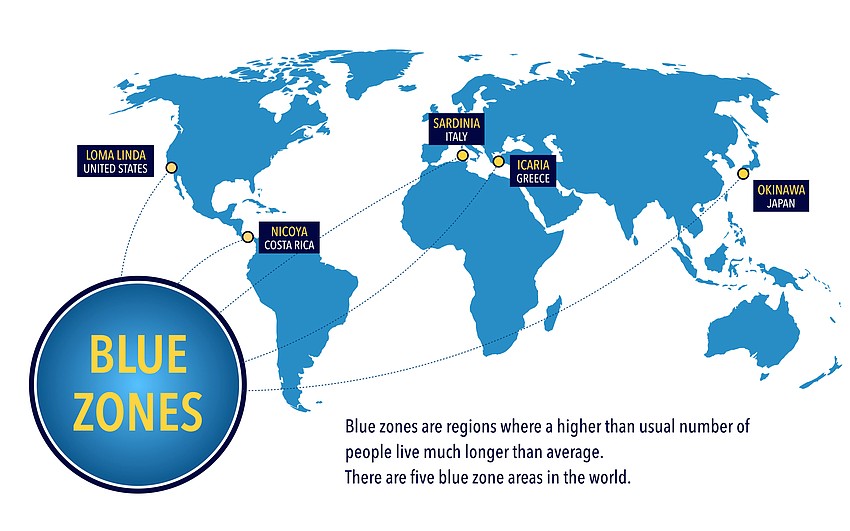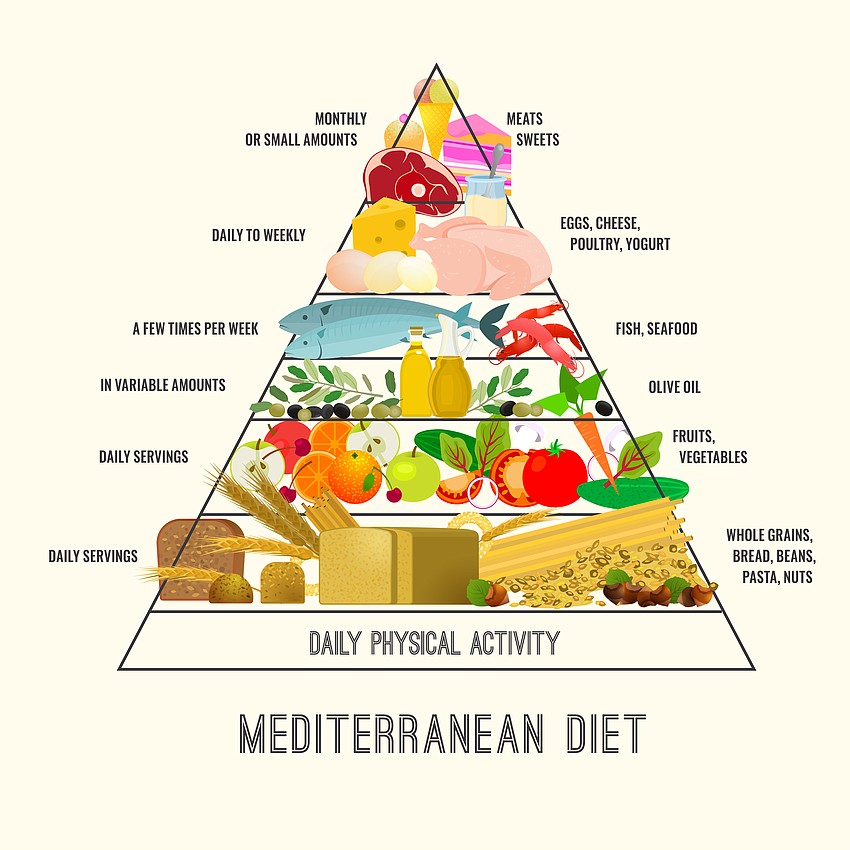- April 29, 2024
-
-
Loading

Loading
Editor's note: This is the second part of a two-part series on eating and living for longevity. Part 1 can be found here.
There are pockets of people all over this planet, including here in the U.S., where people often live to 100 and beyond. And they’re mostly healthy and mobile right to the end.
These places have been nicknamed Blue Zones because when scientists studied them, they marked these areas with a blue marker. The original five Blue Zones are Loma Linda, California; Okinawa, Japan; Ikaria, Greece; Sardinia, Italy; and Nicoya, Costa Rica.

Let’s see what these Blue Zones have in common and how easily we can follow their leads to live longer, healthier lives.
Move. Many of these communities are small enough to make it just as efficient to walk everywhere. Some are agricultural communities where people do farm work, build their own barns, fix their own roofs and such. But others are in cities where people go to work, run, bike and go to the gym. In any case, the science shows that fitness and simple physical activity in general encourage longevity.
Family and friends. They play a vital role in providing a support structure and creating a sense of community. Blue Zones are usually very small towns, but some, like church groups exist in urban settings. People are open and trust each other. Everybody kind of knows everybody else’s business in the Blue Zones, and they have each other’s back as an extended family would. It’s easier to practice healthy living if you’re not doing it alone. Not feeling alone is important for physical, mental and spiritual health.
Purpose. People in Blue Zones seem to have a sense of purpose. They enjoy, or at least are at peace with, their place in the world. People take a healthy pride in their work, whatever it is. They try to stress as little as possible.
Moderate alcohol consumption. Red wine is especially good since it contains antioxidants and anti-inflammatory properties that can help prevent heart disease, stroke and some forms of cancer.
Rest and sleep. Blue Zone residents like their beauty rest. The entire community goes to sleep early and wakes up at about the same time on weekdays and weekends. People get their work done, but they are laid back about it. Afternoon naps are encouraged rather than frowned upon. Sabbath rest is often practiced.
The 80% rule. Blue Zone residents practice some form of the 80% rule. Eat until you feel about 80% full — then stop. Let it settle and don’t eat again until your next meal. Some Blue Zone residents also practice intermittent fasting. Intermittent fasting is a dietary practice designed to train the body to return to its natural state. Burn the food we eat that day and when it’s not quite enough, burn fat.
Once you establish that equilibrium, it's much easier and more enjoyable to maintain a healthy weight.
A Johns Hopkins neuroscientist, Dr. Mark Mattson, has done extensive research on intermittent fasting and has found that it’s a relatively easy way to get your body to transition from burning glucose to burning fat. He calls it metabolic switching.
I suggest that you try eating a healthy dinner using the 80% rule, then fast for the 12-16 hours from right after you finish dinner until breakfast. There are other forms of intermittent fasting, but this is obviously the easiest, because for eight of those 12-16 hours you’re likely to be asleep.
Eat clean. In 1992, the nonprofit Environmental Working Group began to analyze data from the USDA tests of numerous food crops every year. From that, the EWG compiles "The Dirty Dozen.” These are the 12 foods most contaminated with pesticides and other dangerous chemicals. A rating of 1 is the worst and a 12 rating is less harmful. By the way, washing does little to remove contamination, and frozen versions of these foods have just as much as fresh. You should only eat organic versions of these foods if possible.

Since organic produce is often more expensive, I often wait to buy these foods till they’re in season when prices drop and supermarkets run sales on them.
The EWG also publishes The Clean Fifteen, which are the least or uncontaminated foods. These are generally safe to eat non-organic.
Mostly plant-based Mediterranean-style diet. Fill up on fresh, locally produced, pesticide-free fruits and veggies. Eat very little if any red meat, moderate poultry and fish, some whole grain breads or pasta with no preservatives. Some Blue Zones are nowhere near the Mediterranean, but a mostly plant-based, fresh food lifestyle generally rules.
The Mediterranean diet is considered by many experts to be the healthiest food plan overall. Numerous studies have shown that it can reduce the risk of diabetes, high cholesterol, heart disease, osteoporosis, certain forms of cancer, memory issues, dementia and it promotes a longer life. It’s easy to stay with because there’s lots of variety, most people find it delicious, and it’s an eating style rather than a strict diet.
As magical as living to 100-plus sounds, you can see there’s no mystery or rocket science here. Just good clean living, a positive outlook, and an environment that naturally reduces stress.